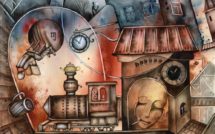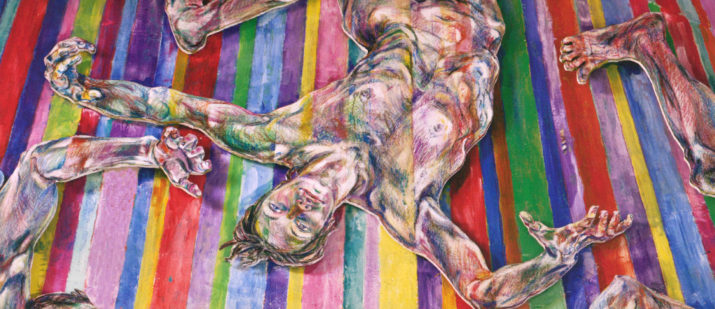
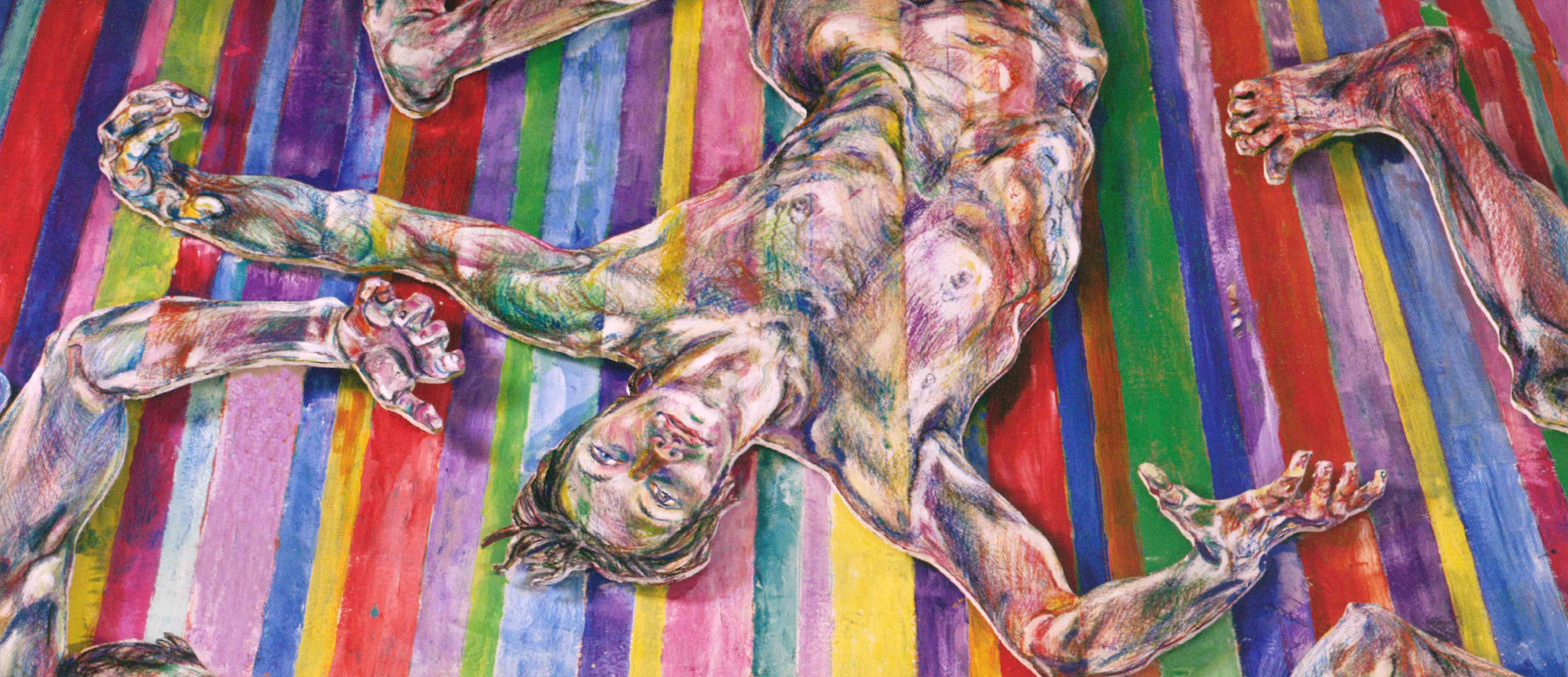
Jacob’s Dream, 1990-94 (detail)
The deep Mediterranean south of Italy, between the lands of Pythagoras and Persephone: that’s where Nik Spatari lives. A “total artist,” who, like the great Beethoven, with his thousand colors listens to and reads the silence of the secret forms and the most sublime melodies of the Universe.
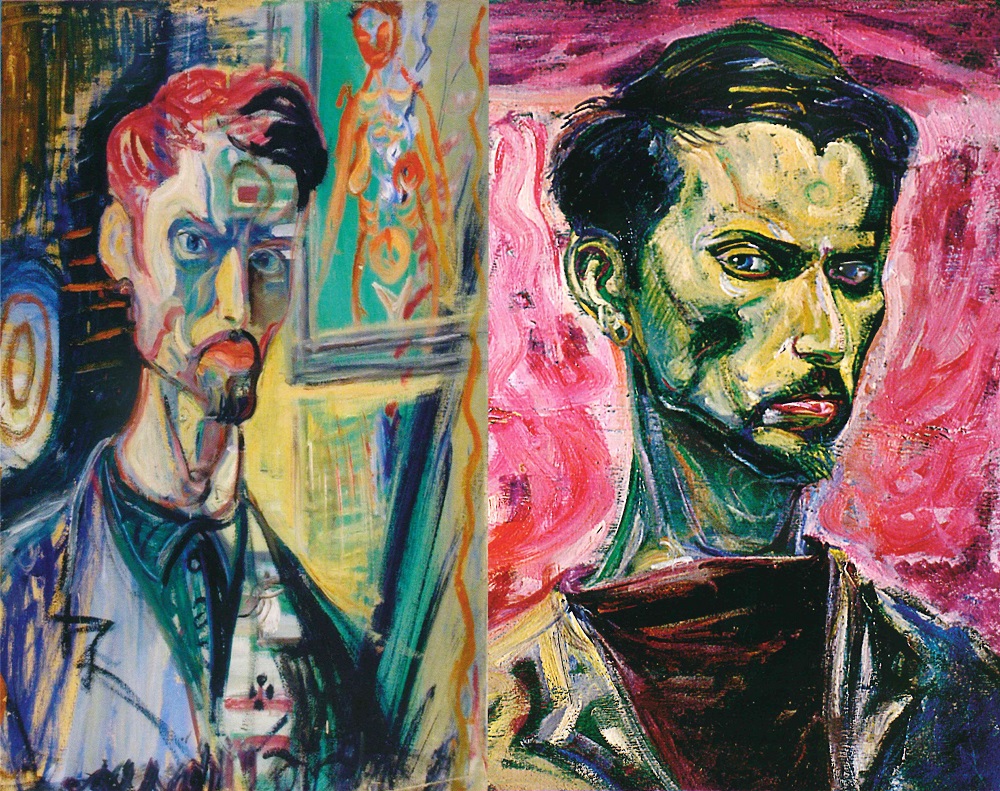
Self-portrait with painting, 1940s Self-portrait on a red background, 1940s
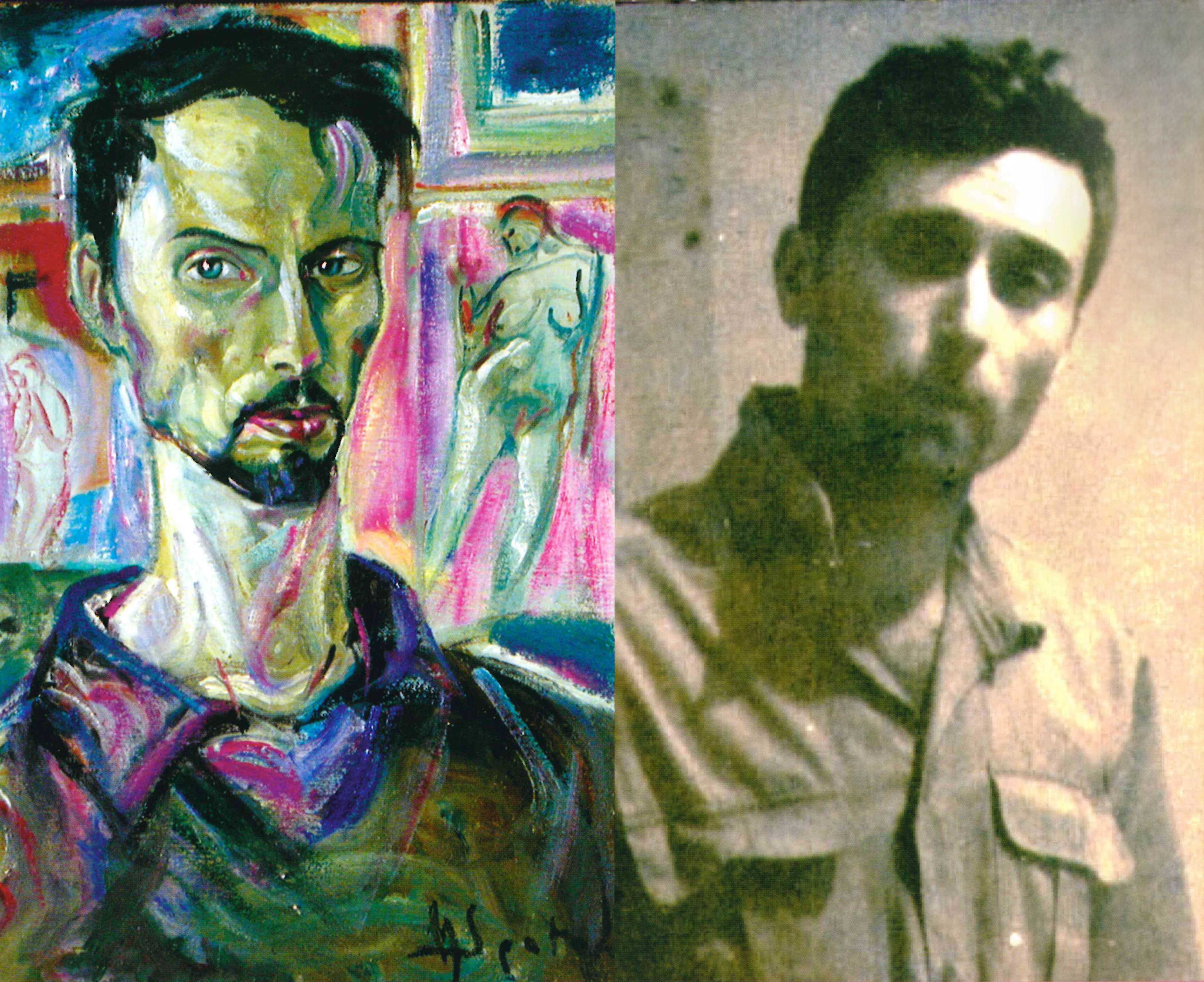
Self-portrait with naked woman, 1950s Self-portrait photography, 1950s
When you talk about Nik Spatari, it is a very complex figure you are dealing with. Like the pagan god Janus, this artist might be seen as a man with two faces; like the god that can look to the past and the future, Spatari has been and still is a protagonist of artistic movements that span two centuries, both representing 20th-century Avant-garde and being an independent pioneer in 21st-century art.
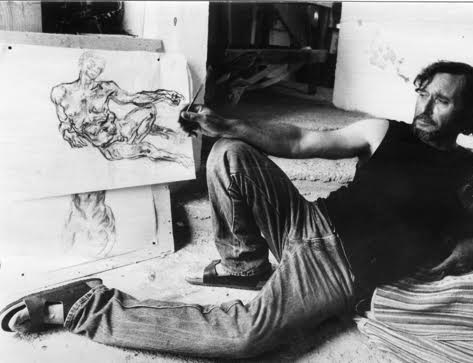
Nik Spatari, Paris, 1960s
Nik Spatari was born on April 16th, 1929 and spent his youth between the two World Wars in southern Italy, in Mammola, a remote village in the Torbido valley, a protohistoric settlement of the Urnfield culture where he learnt the secrets of nature and of the ancestral art that would influence his own style.
At the age of nine, he won the first prize of the international drawing competition organized by the Rome–Berlin–Tokyo Axis. As he grew up, he set on an intense research activity that gave him the chance to establish prestigious collaborations and awarded him many prizes, also giving him a strong education in Europe and America, where “true art” was.
In 1959, he moved to Paris, where he joined the CIGAPS (Centre International de Groupement d’Arti- stes Peintres Sculpteurs), whose patron was André Malraux. There he met Jean Cocteau, who opened the doors to success for him, and Le Corbusier, who taught him and directed him towards architecture. Spatari also met and developed interesting collaborations with many artists and authors, namely Max Ernst, Picasso, Sartre, Montale, La Cava, Argan, Guttuso, Warhol, Levi, Zevi, Portoghesi, Toyofuku, Apollonio, Burri, Rotella, etc.

MuSaBa, 2011 (panoramic view)
In 1969, after spending some time in Milan, he returned to Calabria, where, together with his partner and muse Hiske Maas, he founded the MUSABA, conceived as a park, museum and laboratory mixing art and nature. In this place, architecture, sculpture and painting create an archeological and landsca- pe park against the background of a Mediterranean garden. It is a research laboratory open to young people from all over the world and it draws inspiration from the workshops of the Renaissance, where artists had young pupils help them with their work, learning art through practice in exchange.
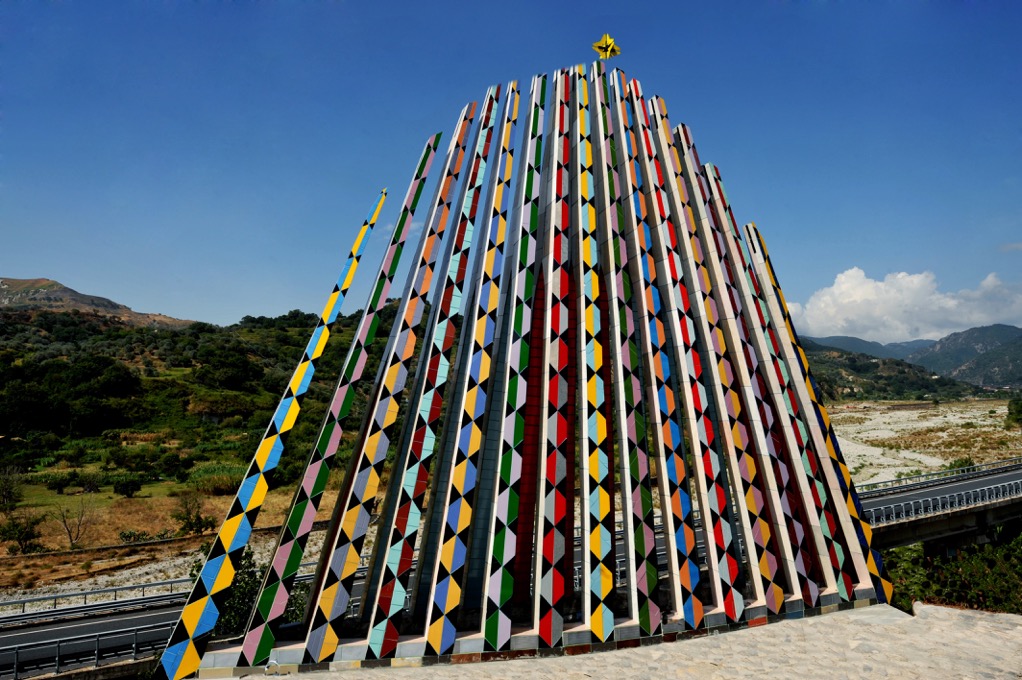
Universal concept, MuSaBa, 2013
Today, MUSABA is a leading research and experimentation center, considered among the most important institutes representing the artistic and cultural heritage of the Mediterranean.
Nik Spatari, MuSaBa, 2015
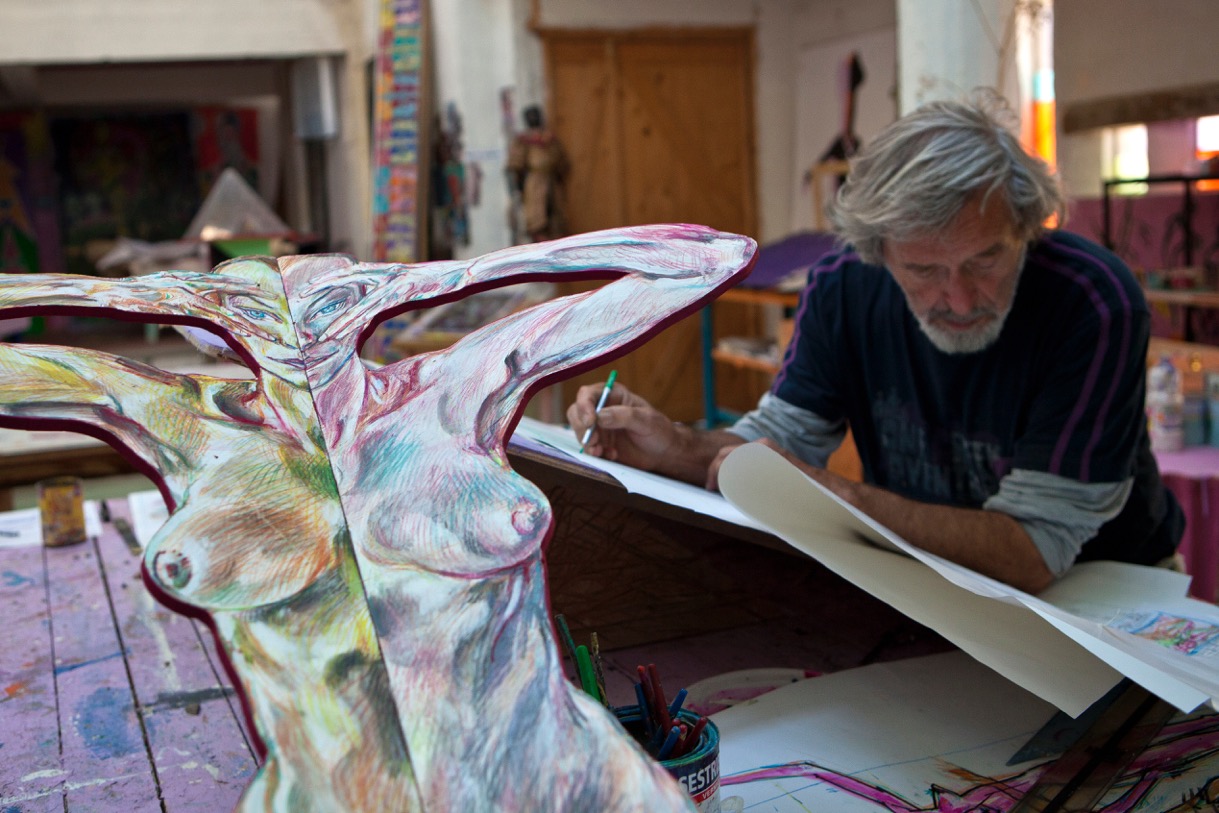
Spatari’s artwork is where East and West, North and South, ancient and modern civilizations meet and influence each other, exploring history and the senses, to celebrate the Mediterranean and its countless traditions, cultures and religions. Spatari begins with archetypes and primitive shapes and gives life to modern myths, to a new language where the “external world” co-exists with the symbolic abstraction. It’s a language that is independent, but understandable and belonging to everyone, since we all belong to the same domain of definition where “life and death do not exist,” a continuous and infinite domain of definition that is the Infinity.
What is most impressive about Spatari’s artwork is the use of color, which, together with the Pythagorean geometry and the ideas of space and shape, denotes an accurate search for visual communication on the principles of perception, to go beyond the mere reproduction of reality and portray a world that is superior to the material one, a world characterized by the complementary colors of human interiority.
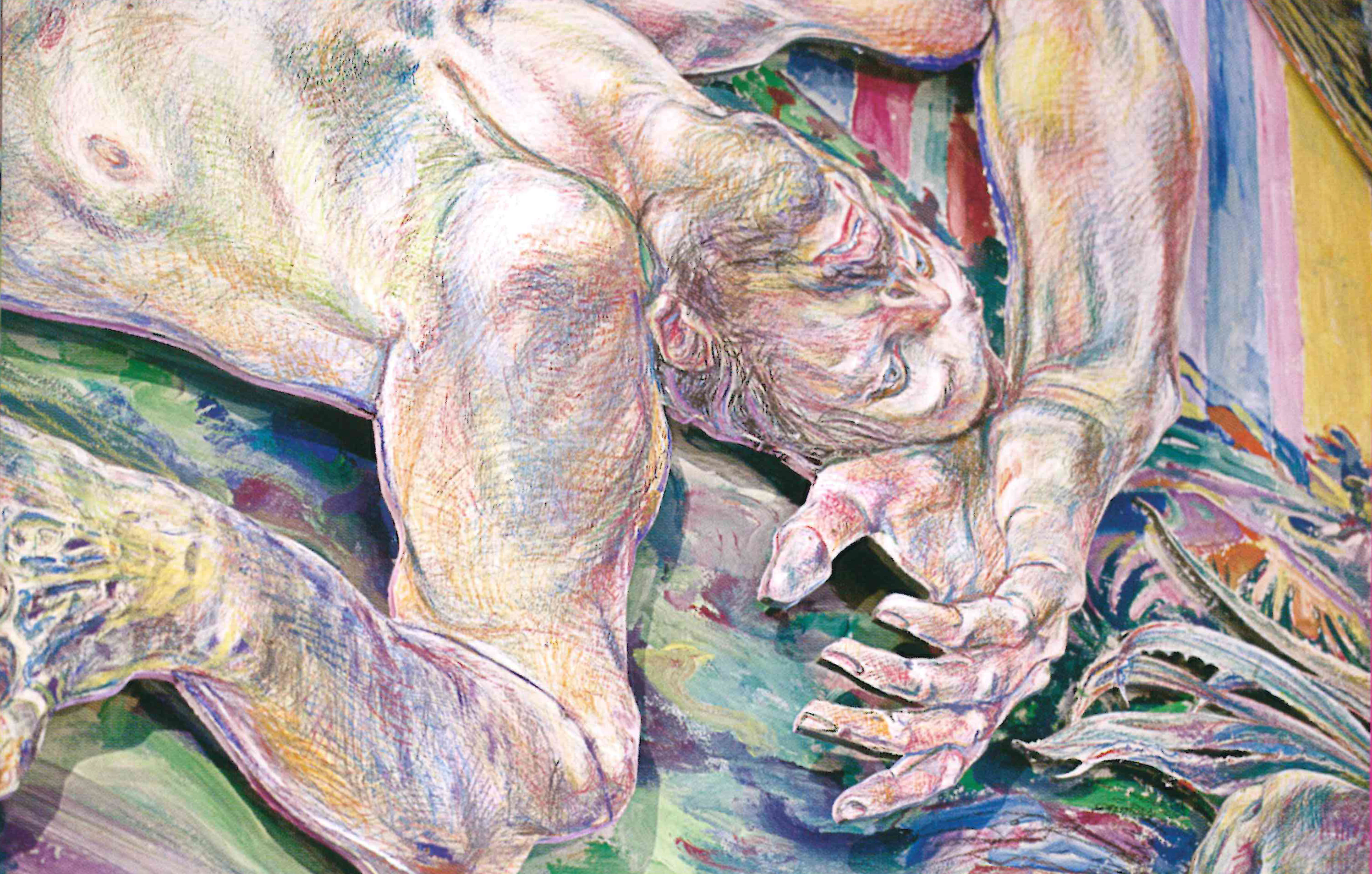
Jacob’s Dream, 1990-94 (detail)
The manifesto of Spatari’s style is Il Sogno di Giacobbe (Jacob’s Dream), the most important work of art of the MUSABA, covering the entire vault of Saint Barbara’s church (length: 16 m; width: 6 m; height: 10 m). Twelve smaller vaults are covered in biblical wooden figures, juxtaposed and hanging in the void, with dreamy looks and painted with the thousand colors of Nik Spatari.
The work as a whole is breathtakingly stunning, oscillating between reality and dreams, Jacob’s Dream, in which the perfection of opposites co-exist: conversion and temptation, Jacob himself and his twin, his two wives, his two servants, his two lands, his one God, and the pagan deities, the light and shadows of the time. Spatari uses colors to show contemporary people the eternal beauty of that Dream.
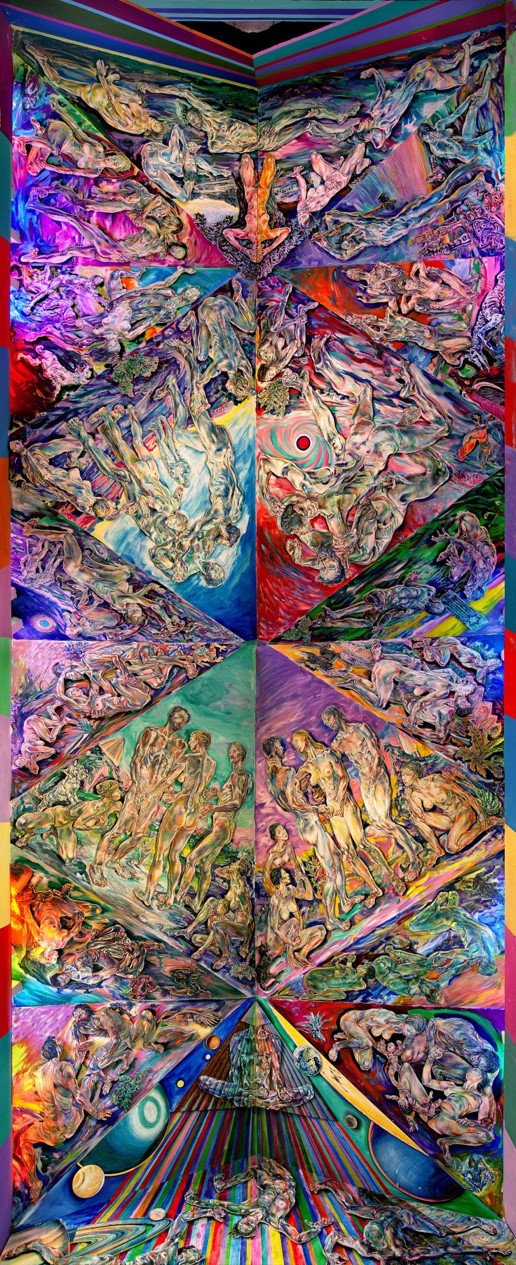
Jacob’s Dream, 1990-94
Known as “Southern Italy’s Sistine Chapel,” it strikes the visitor with a similar sensation to that of Michelangelo’s masterpiece, that makes one’s very own being feel smaller, no longer the center of the universe but, instead, a very, very small part of it.
Antonio Laruffa is an Italian architect. He studied at La Sapienza University of Rome (Faculty of Architecture) and at Polytechnic University of Milan (School of Architecture and Society). He is also member of the Council for European Studies (CES) at Columbia University. His works have been widely exhibited and published throughout Europe.
Nik Spatari, born Nicodemo Spatari in 1929, is an artist with a diverse and hardly conventional training who has worked with many types of surfaces, pigments, and techniques. He is a painter, sculptor, and architect.
Published on April 13, 2017.

